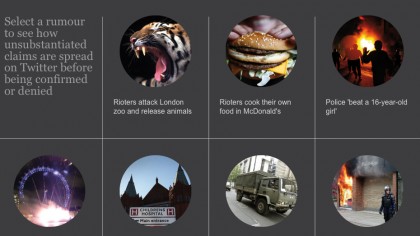Dealing with disaster: how social media is helping save the world
Twitter Alerts and Facebook posts could save your life
The facilitation of easy text message donations has also meant greater success for these campaigns, with the total for Haiyan already reaching $16m at the time of writing.
Other services such as iRevolution are taking social media data (there were 20 million tweets during Hurricane Sandy) to build hubs where reliable and helpful information can be amassed.
The Twitter Dashboard aims to use AI algorithms that highlight tweets showing first-hand and eyewitness reports, posts with photos and videos, content from TV and online news reports, enabling users to see the most important and reliable information.
It also plans to include a means to give donations for individuals in the most need of relief and allow other good Samaritans to put themselves forward to assist in the relief efforts.
Misinformation and too much information
As well as offering untold help during times of need, the digital age can cause new problems during emergencies.
Rumour and misinformation can spread like head lice in a classroom full of very huggy 5-year-olds, during these emergency situations.
During the London Riots of 2011, online rumours gained prominence, they claimed the London Eye was on fire, that a zoo tiger was on the loose in Primrose Hill, that army tanks had been deployed in Bank and that some yoofs in Tottenham had broken into a McDonalds to start cooking up Big Macs to feed their looting exploits.
Sign up for breaking news, reviews, opinion, top tech deals, and more.
The Guardian built an awesome interactive tool to chart the dissemination of these rumours on Twitter.

In the 24-hour news channel age, with organisations desperate for new information, these rumours and falsehoods can become facts after a few hundred retweets of a faked photo. Twitter knows this and hopes that its Twitter Alerts portal will provide assistance with "crowd and misinformation management" in order to protect those affected by the emergencies.
But it's not just wrong information causing problems. It's often too much information that's putting lives in danger. For example, as police closed in on the Boston Marathon bombing suspect, following a citywide, social media assisted manhunt last April, Twitter users listening into police scanners began tweeting the suspected location to the assailant.
"it's not just wrong information causing problems - too much information is putting lives in danger."
"WARNING: Do Not Compromise Officer Safety by Broadcasting Tactical Positions of Homes Being Searched," @Boston_Police tweeted before feeds of the scanner were taken offline.
The Future
As the social networks, tech companies, news organisations and those co-ordinating rescue and relief efforts better learn how to weed out the rumour and deliberate misinformation, these tools will only improve. Twitter Alerts is still in its infancy as is Google People Finder, while powerful social media analytics tools like iRevolution's planned Twitter Dashboard could save countless lives.
The continued proliferation of connectivity and smartphones in the developing world will get this information out to the poorest countries, who through some cruel irony are often the worst hit by these tragedies.
Organisations like FEMA and the Red Cross are still adapting to this new social media saturated era and have pledged to implement and develop their strategies during future emergency situations.
Amid the ongoing discussion on the merits, uses and misuses of social media, the potential for it to save the world, or at least some of its inhabitants, must rank pretty highly. We could put up with a few more annoying status updates if it means our loved ones are still around to read them, next time the big storm hits.
A technology journalist, writer and videographer of many magazines and websites including T3, Gadget Magazine and TechRadar.com. He specializes in applications for smartphones, tablets and handheld devices, with bylines also at The Guardian, WIRED, Trusted Reviews and Wareable. Chris is also the podcast host for The Liverpool Way. As well as tech and football, Chris is a pop-punk fan and enjoys the art of wrasslin'.
